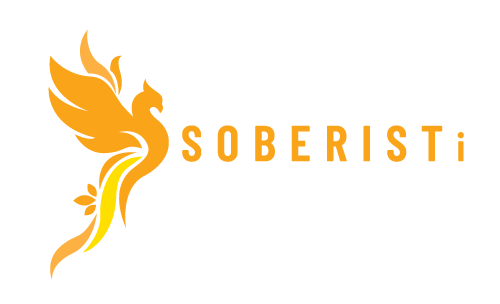The 12-step world is predominantly a man’s world. When you read the newspapers, it often feels like there’s no other path to sobriety.
The Finnish alcohol treatment scene is first and foremost a man’s world.
Given that the male perspective significantly influences substance abuse policy, it’s worth noting that this statement comes from a man, Docent Pekka Saarnio, which may lend it some weight.
In the past six months, it has become strikingly clear that even in the media—specifically in Finland’s largest daily newspaper and a few others—men predominantly voice their opinions on this topic.
“Disappointed”, a middle-aged, highly educated woman seeking help for her alcohol addiction, wrote in the Helsingin Sanomat opinion column on February 9 about her experiences with mental health and substance abuse services in her city. She felt she was treated not as a whole person but rather as a stereotype of an alcoholic.
In response, representatives of the Myllyhoitoyhdistys (Mill Management Association) addressed her article in the same column. This association advocates for the Twelve Steps of the Minnesota Model. Its board includes several owners of “Minnesota” treatment facilities.
In their response, they rightly pointed out the shortcomings of our national drug treatment system. They also emphasized the Twelve Step Recovery Programs they promote and the Minnesota Model as recognized and effective treatment methods.
Helsingin Sanomat echoes the AA narrative
Yesterday, I submitted a response that was ultimately not published (you can find it at the end of this column). Instead, the newspaper published a reply from a woman who is sober, writing under the pseudonym AA, and affiliated with Twelve Step and Peer Support programs.
Additionally, the same issue features an interview with Marko Jantunen, an Account Manager at Avominne Oy. Jantunen, a proponent of the 12-step program, emphasizes, “The most important thing is to recognize that addiction is a chronic disease. A lack of information can, in the worst case, allow the disease to worsen.”
For context, Avominne, like AA, operates within the framework of the 12-step model. This approach is now gaining traction in mainstream media—so much so that it’s hard to find an adult who hasn’t encountered the phrase, “alcoholism is a lifelong disease.”
The problem lies in the scarcity of alternative perspectives. The principles of journalism and the criteria for news reporting seem to overlook diverse views on substance abuse treatment.
Since 2016, I have sought to introduce a new, female perspective on addiction and treatment methods into the mainstream media. One would think this would pique interest, but it hasn’t.
Finland’s largest daily newspaper continues to favor articles that uphold the AA narrative, perpetuating the idea that alcoholism is a chronic disease and that the 12-step method is the sole path to recovery.
Almost invariably, the experts featured are men who have hit rock bottom, found redemption through AA, and embraced the Minnesota model.
I’ve been reflecting on the current state of addiction treatment and expertise.
- Do you need to be the head doctor of an A-clinic to be considered an addiction specialist?
- Must you represent a Twelve Step Association or Foundation to be deemed an “official” figure in this field?
- Is it necessary to be a sober man who has followed the 12-step path to be recognized as a knowledgeable expert?
It’s important to note that these so-called official actors often represent limited companies and businesses, alongside their foundations and associations—just like many large corporations.
Are there individuals in the upper echelons of the newspaper hierarchy for whom this issue is more about passion than rationality?
Do my ideas seem too revolutionary or even intimidating?
After writing Free from Wine (Wise Life, 2016), where I share my own journey to sobriety and challenge conventional views on alcohol, alcohol-related issues, and treatment approaches, I have discovered many like-minded individuals worldwide. They, too, have authored their own Free From Wine books and reached similar conclusions.
Many of them initially tried the 12-step program but later found methods that resonated better with them—paths to sobriety rooted in joy.
This movement is gaining momentum; it’s already a significant narrative, yet Finnish mainstream media remains hesitant to embrace it. Like a large ship, it notoriously struggles to change course.
Women addicted to Alcohol are bystanders
Nevertheless, my article was once again not published, and the pseudonym Disappointed was offered more of the same in Helsingin Sanomat: a reiteration of previously stated opinions about the diagnosis of alcoholism.
Here is my response to Helsingin Sanomat, which was not published:
“Disappointed wrote in the Helsingin Sanomat opinion column on February 9 about their experiences with mental health and substance abuse services in their city. They felt they were not treated as a whole person, but rather as a stereotypical alcoholic.
Pettynyt represented a demographic that occupies the middle ground in the substance abuse treatment landscape: an educated woman who performs her job well and does not identify as an alcoholic.
The experiences of the women I interviewed reveal that the field of substance abuse treatment fails to recognize this specific group of individuals with alcohol problems. Some of the women sought help from the A-Clinic, where their issues were dismissed as unimportant. Others attempted to engage with AA but felt they were not at a low enough point in their lives to identify with the program.
The Finnish substance abuse treatment sector suffers from a lack of collaboration and outdated attitudes that date back over 80 years. These notions stem from a time when it was uncommon for women to drink, and those few who did face alcohol-related issues were regarded as the lowest caste in society, unwelcome in AA groups.
The world’s most renowned treatment method, the 12 Steps, was developed in 1935 when Bill Wilson, a stockbroker who had found sobriety through hallucinogens and a higher power, managed to help Dr. Robert Smith achieve sobriety. Both represented the upper class in 1930s America. Thus, the method is predicated on the belief that alcoholics possess an inflated ego, needing to be humbled to recover.
The 12 Steps have not evolved over the years, yet the world has. Today, women are consuming alcohol at unprecedented rates. Alcohol consumption among Finnish women has nearly sextupled over the past 40 years, and the age group that consumes the most—15-29 year olds—now drinks the same amount as the average male did in 1968.
Although gender equality has improved since the 1930s and women are now allowed to participate in AA groups, few women struggling with alcohol addiction see themselves as divine. Instead, most feel shame and guilt regarding their drinking. They do not need to “learn humility” over a cup of coffee in AA groups; they have been practicing humility their entire lives.
Most of these women prioritize their obligations over self-care, often at the last minute. What they need is not humility but self-compassion, peer support, and recognition of their boundaries.
The Finnish discourse on substance abuse is stagnant because various stakeholders rigidly cling to their own methods.
Grouping all alcohol-dependent individuals as mere alcoholics can create barriers to seeking treatment. One can be addicted to alcohol without identifying as an alcoholic.
There is no one-size-fits-all solution. Therefore, it is crucial to remain open to new ideas and methods.
Fortunately, there is now support for women who find themselves in this in-between space: the Soberist method, grounded in research and personal experience.
I sincerely hope that Disappointed will discover Soberist and join the ranks of joyful, sober women.
Ira Koivu, PhD,
Free from wine author
Founder of Soberist, change coach “
***
I truly hope this text is shared widely enough to reach Disappointed and all women in similar situations. <3
– Ira


